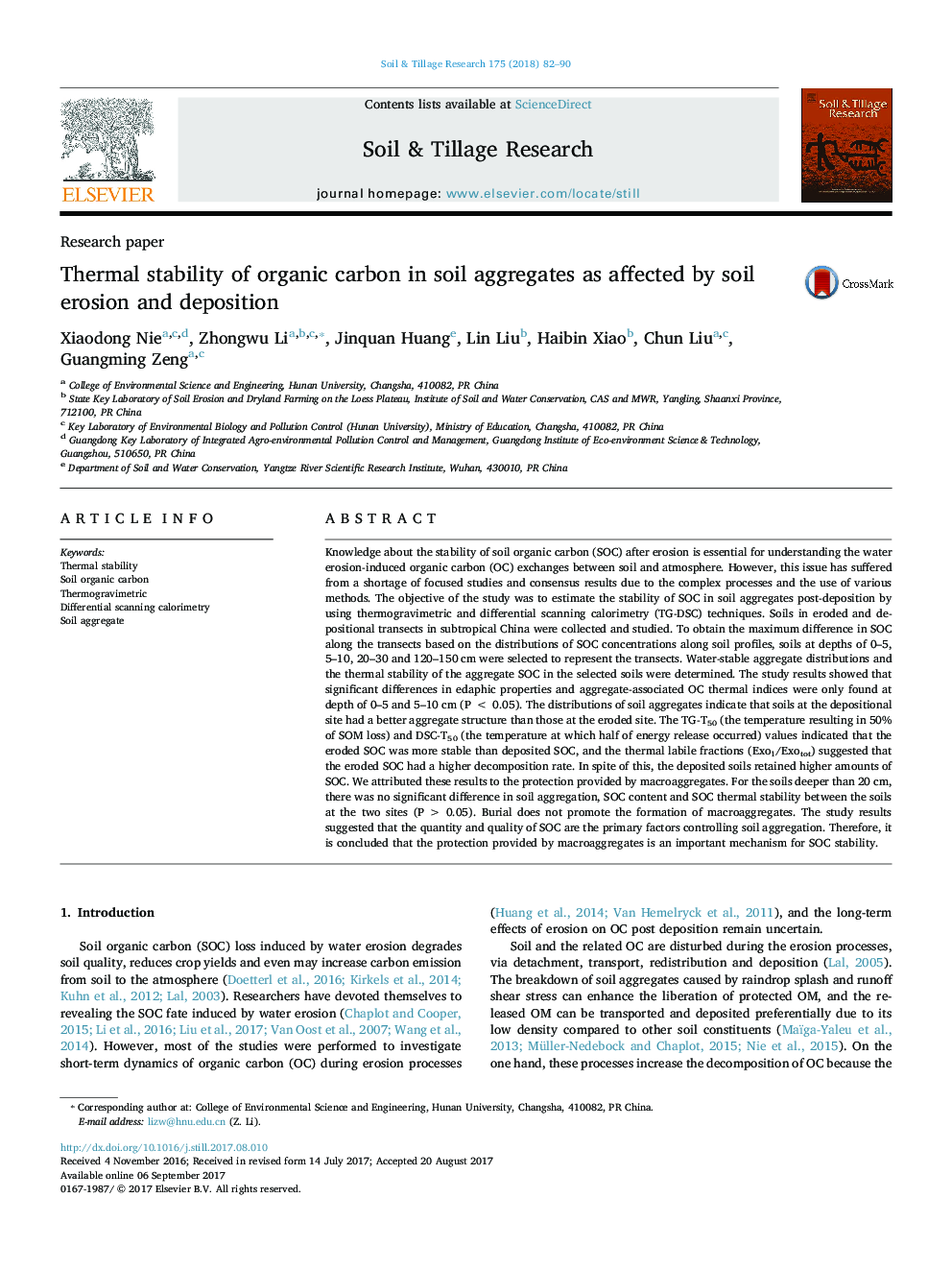| کد مقاله | کد نشریه | سال انتشار | مقاله انگلیسی | نسخه تمام متن |
|---|---|---|---|---|
| 4927422 | 1431828 | 2018 | 9 صفحه PDF | دانلود رایگان |
- Soil aggregates and related OC affected by erosion and deposition were characterized.
- Thermal analyses were used to indicate aggregate-associate carbon stability.
- Aggregate-OC at surface soils was more stable at the depositional site.
- Burial cannot promote the formation of macroaggregates.
- Protection of macroaggregates is a main mechanism for carbon stability.
Knowledge about the stability of soil organic carbon (SOC) after erosion is essential for understanding the water erosion-induced organic carbon (OC) exchanges between soil and atmosphere. However, this issue has suffered from a shortage of focused studies and consensus results due to the complex processes and the use of various methods. The objective of the study was to estimate the stability of SOC in soil aggregates post-deposition by using thermogravimetric and differential scanning calorimetry (TG-DSC) techniques. Soils in eroded and depositional transects in subtropical China were collected and studied. To obtain the maximum difference in SOC along the transects based on the distributions of SOC concentrations along soil profiles, soils at depths of 0-5, 5-10, 20-30 and 120-150Â cm were selected to represent the transects. Water-stable aggregate distributions and the thermal stability of the aggregate SOC in the selected soils were determined. The study results showed that significant differences in edaphic properties and aggregate-associated OC thermal indices were only found at depth of 0-5 and 5-10Â cm (PÂ <Â 0.05). The distributions of soil aggregates indicate that soils at the depositional site had a better aggregate structure than those at the eroded site. The TG-T50 (the temperature resulting in 50% of SOM loss) and DSC-T50 (the temperature at which half of energy release occurred) values indicated that the eroded SOC was more stable than deposited SOC, and the thermal labile fractions (Exo1/Exotot) suggested that the eroded SOC had a higher decomposition rate. In spite of this, the deposited soils retained higher amounts of SOC. We attributed these results to the protection provided by macroaggregates. For the soils deeper than 20Â cm, there was no significant difference in soil aggregation, SOC content and SOC thermal stability between the soils at the two sites (PÂ >Â 0.05). Burial does not promote the formation of macroaggregates. The study results suggested that the quantity and quality of SOC are the primary factors controlling soil aggregation. Therefore, it is concluded that the protection provided by macroaggregates is an important mechanism for SOC stability.
165
Journal: Soil and Tillage Research - Volume 175, January 2018, Pages 82-90
